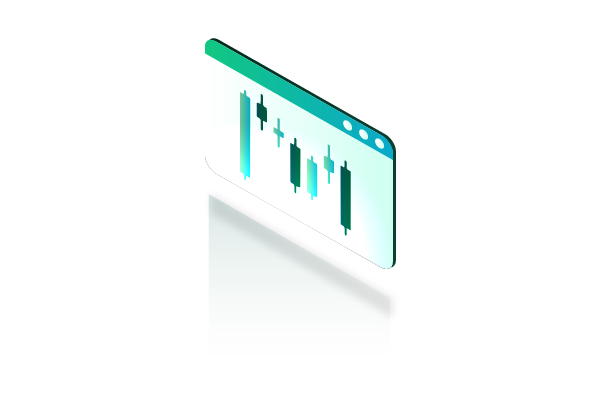In the last few years, the predominance of cryptocurrencies has led to a rise in crypto trading interest as people take the opportunity to amass wealth through the much- talked about crypto market. Crypto trading courses stand out as the ultimate package for individuals to acquire efficient cryptocurrency trading assistance in this present era of growing complexity.
The courses would be structured as directed educational programs for the learners to acquire knowledge, capabilities and strategies for survival in the constantly changing marketplace of cryptocurrencies. Holds basic tutorials on blockchain technology that describe its structure, the fundamentals of cryptocurrency, trading approaches and risk management techniques. It explains all these aspects in detail for the entire ecosystem of learners, whether beginners or professionals. Through this investigation, we look at the major parts of crypto trading courses and give recommendations on how to pick the right course to help you set off on the right foot in the trading path.
About Crypto Trading Courses

Blockchain classes are structured learning platforms that are aimed at empowering the participants with the necessary knowledge and skills so that they effectively operate within extremely complicated cryptocurrency markets. The coursework is organized in a manner that makes learning easy in that the beginner has no hard time when lacking knowledge concerning cryptocurrencies since the experienced are also there to provide advice on how to go well with your strategies. Usually online and interactive, the courses deal with a wide range of basic material, from introducing the concepts of blockchain technology to grasping cryptocurrency fundamentals, and then exploring diverse trading approaches, from day trading and swing trading through long-term investing, becoming familiar with technical tools and indicators, applying risk management strategies, and, finally, understanding market psychology.
Translating the format of the courses is another important aspect, which includes learning to design educational material that supplies the student with a full picture of digital asset trading. The beginning part addresses blockchain technology, explaining how cryptocurrencies work, and moving on to the underlying principles of trading. The intermediate learning stage goes ahead to deal with more elaborate trading strategies, market dynamics, and techniques for risk mitigation. The curriculum frequently undergoes renovation in order to keep abreast of the constantly changing scene in the crypto market, which is reflected in the incorporation of the most recent trends, innovations and best practices.
Teachers perform a very significant part of the course. They come with broad experience in crypto trading market issues. Due to the fact that most of the educators are highly skilled traders or IPL industry professionals with an outstanding track record in the field, learners can benefit from the educators’ experience through practical application, tips, and running examples. In addition, many cryptocurrency courses have interactive sessions where notable industry experts in the crypto-space address the students, enabling them to appreciate different views and acquire lasting know-how.
Also Read: Top 5 Layer 1 Crypto Projects Stand as Pillars of Innovation in 2023
Simulated trading exercises, case studies and real life examples are other crucial factors deliberated by most of the crypto trading courses with a view to giving students practically based experience that will re-enforce some of the theoretical concepts taught in the courses and enable students to put what they learn into practice. These real trading scenarios provide the students with ample opportunity to work with trade execution, draw conclusions from market trends, and learn to manage risk for confidence building, which makes them strong in their trading abilities.
The matter of community support can frequently be dealt with by inclusive crypto trading courses, which give students a great opportunity to discuss every topic of their interest on forums, discussion groups and mentoring programs where they can interact with instructors and other traders, get advice and help, or share personal trading experiences. This feeling that students are not alone in this task strengthens communication, sparks collaboration and fosters mutual help, resulting in a sense of security and belonging in the group.
People looking for crypto trading courses need to take into account elements like the reliability of the provider of the training as well as the skills and qualifications of the tutors, the program’s completeness, connections to practical exercises as well as industry based communities, and the affordability and accessibility of the course. Through meticulous assessment of these considerations and finding a course suitable to their learning targets, expertise level, and budget, people can have a chance to join the forever voyage of skill acquisition in the unpredictable environment of crypto trading.
Key Components of Crypto Trading Courses

The core elements of the courses related to crypto trading cover an extensive and comprehensive set of aspects to assure that the students have a thorough knowledge of cryptocurrency exchanging and trading. These components are meticulously built with the learners in mind, including beginners, professionals, and experts. Here are some key components:
Curriculum
The course curriculum stands right on its own, like the backbone of a set of topic areas, minimizing the gap of expertise amongst the diverse audience: from beginners to experienced traders. For beginners, the process mostly involves dealing with principles and concepts like the operation of blockchain technology, basic cryptocurrency information and a brief discussion of trading principles.
During this course, we will be tackling issues that grow in complexity, encountering technical analysis, chart patterns, indicators for control of the risks, and a series of trading styles such as day trading, swing trading, and long-term investing. The curriculum is almost always well organized in order to create a stepping stone learning experience, initially learning before firmly setting into more complex concepts. Some ways I may integrate this activity include case studies, real life examples, and practical exercises with the aim of reinforcing learning and experiencing hand on work.
Instructors
The instructors are the ones that educate the students about crypto trading classes on a high level; with their help, students can obtain financial knowledge, experience, and practical usage information in the cryptocurrency markets. Students do not have to walk on the road blindly. They are guided through the complexity of trading by the exchange students themselves, who, using their own experience and expertise, provide tips and strategies to the exchange students.
The areas of expertise may vary from technical analysis to algorithmic trading, risk management to behavioural finance, or arbitrage to trend trading. This all depends on the field that the teacher specializes in. The critical elements of their instruction that enable the understanding of difficult matters, the participation of students, and the provision of feedback make the learning process better by a significant margin.
Practical Experience
For the effectiveness of crypto trading lessons, the practical application of theoretical knowledge is a key component, and it helps students cover all the trade processes in real market conditions. It is possible that this might comprise simulated investing environments where students can learn to execute trades, spot trending markets, and monitor risk by practicing trading with theoretical money without any exposure to real capital.
Also, there are some aspects, such as case studies, trading simulations, and interactive exercises, where students can learn how to trade systematically and, certainly, gain assurance of their confidence in trading. Rhetorical key principles are being not only cemented in the brain but are becoming really useful when deciding on successful trading in complicated reality.
Community and Support
Crypto trading courses usually include access to forums, mentorship programs, and online communities where students can communicate with the instructors, have discussions with other learners, exchange ideas, and, if need arises, get advice. Community support gives students the chance to go along, develop cooperation, and create a tight network of students based on the same problems.
The mentorship programs may rotate the students who have worked with successful traders where they can get the needed counseling along with feedback and one-on-one training, a move that might improve the student’s experience. However, the community-based perspective, together with student support mechanisms, is the major factor that contributes to the development of a collaborative learning culture and helps students succeed in their trading journey.
Format and Accessibility
The cryptocurrency trading courses will be given on the platform of massive open online courses (MOOCs), which are normally in the form of online video lectures, live webinars, written-guides, interactive tutorials and self-paced modules. Normally, the way the class is structured matches the courseability of the learner as well as the expected outcome of the training provider.
Another element behind the success of online learning is the offering of a variety of scheduling options, including self-paced learning, creating an opportunity for a comfortable learning space. Accessibility is also an important aspect, in which some courses at least provide mobility, offline access and multiple versions for a global audience. Through the use of different styles and by becoming easily available, these types of classes are meant to approach everyone, including those who have different lifestyles.
Choosing the Right Crypto Trading Course

Picking up a high-quality cryptocurrency trading course is a vital step in your journey that can greatly affect the quality of your studies as well as your short-term and long-term trading records. Several key factors should be considered when making this decision:Several key factors should be considered when making this decision:
Curriculum
The curriculum of a crypto trading course overlaps with the subjects covered and the part of mastery that is achieved over time. Try to enroll in a course that provides broad materials covering the basic ideas like blockchain technology, the fundamentals of cryptocurrency, technical analysis, approaches to risk management, and different types of trading styles.
Since wider coverage of the subject matter is essential, it is important that the curriculum be designed for both novice and experienced traders, who will be provided with multiple opportunities to learn from the principles they still understand up to more advanced topics and dynamic skills.
Instructors
The quality of a trading course will depend comfortably on the skills and expertise of its instructors. Study the history of the instructors, the experience they gained, and their stated proficiency in cryptocurrency trading and teaching.
Seek out classes taught by individuals who have real life trading experiences, those who are involved in the industry, or reputable educators who have proven success in this field. The effectiveness of an instructor’s coaching lies heavily in his or her beliefability, which will determine the level of inferences and comments she makes during the course.
Also Read: Top 10 Fastest Blockchain Platforms in 2024
Format and Delivery
Is the course online or in person? If online, will this be done live or asynchronously? If it is delivered live, what are the day and time requirements? Some courses are offered through pre-recorded video lectures; others will set up webinars where questions and answers are included.
The rest of them may have both interactive tutorials, written guides, or a combination of these formats. Select among many formats that are in accordance with your personal learning styles and tempo of study. As an additional issue, whether course materials will be available online, downloadable, or through a learning management system, the accessibility of those materials should be evaluated.
Practical Experience
The one practical experience that develops skills and confidence is experience in the game itself. My favorite learning activities are courses that focus on the realistic application of educational techniques in the real market simulation. Hands-on experience strengthens the teaching-by-doing approach, which, in the future, will turn you into an apprentice in the cryptocurrency market.
Community and Support
The capabilities of community can be harnessed to create a lifestyle that is tailored to what the student wants by propelling learning and effectively providing avenues for interaction, collaboration, and peer-to-peer learning.
Take such subjects as forums, discussion groups, mentorship programs, and live Q&A sessions, where you have support from instructors and fellow students who can answer your questions, contribute ideas, and provide advice. The community may act as a resource of knowledge for inside traders, as they can provide useful tips, courage, and motivation throughout your trading life.
Conclusion
Crypto trading courses are developed to provide a systematic approach to understanding the cryptocurrency industry and trading methods that can fit individuals with various levels of trading experience and knowledge into one piece. These courses encompass diverse thematic areas, from blockchain technology introductory lessons to advanced trading techniques, and the formats of delivery can be varied: online video lectures, live webinars, and interactive tutorials. The core elements of such programs involve a complete curriculum, educated mentors, practice from the side of virtual stock trades, and the community support that is the forum and the mentor programs.
When one is making a choice about which cryptofinancial lessons are right for them, the person who is understanding the course must pay attention to the program that covers the topics covered from the basic stages to make a comprehensive lesson. Complications methods consist of evaluating the quality of teachers (their authority and knowledge), the course, and the format of the course delivery. Practically, the job on hand and community backing are important things to look for because you are provided with the chance to have firsthand experience working with classmates and instructors.
Disclaimer: The information provided by HeLa Labs in this article is intended for general informational purposes and does not reflect the company’s opinion. It is not intended as investment advice or a recommendation. Readers are strongly advised to conduct their own thorough research and consult with a qualified financial advisor before making any financial decisions.

